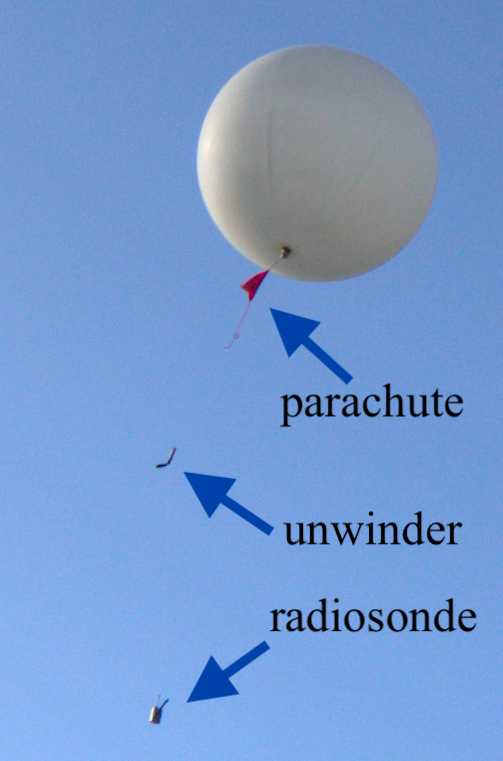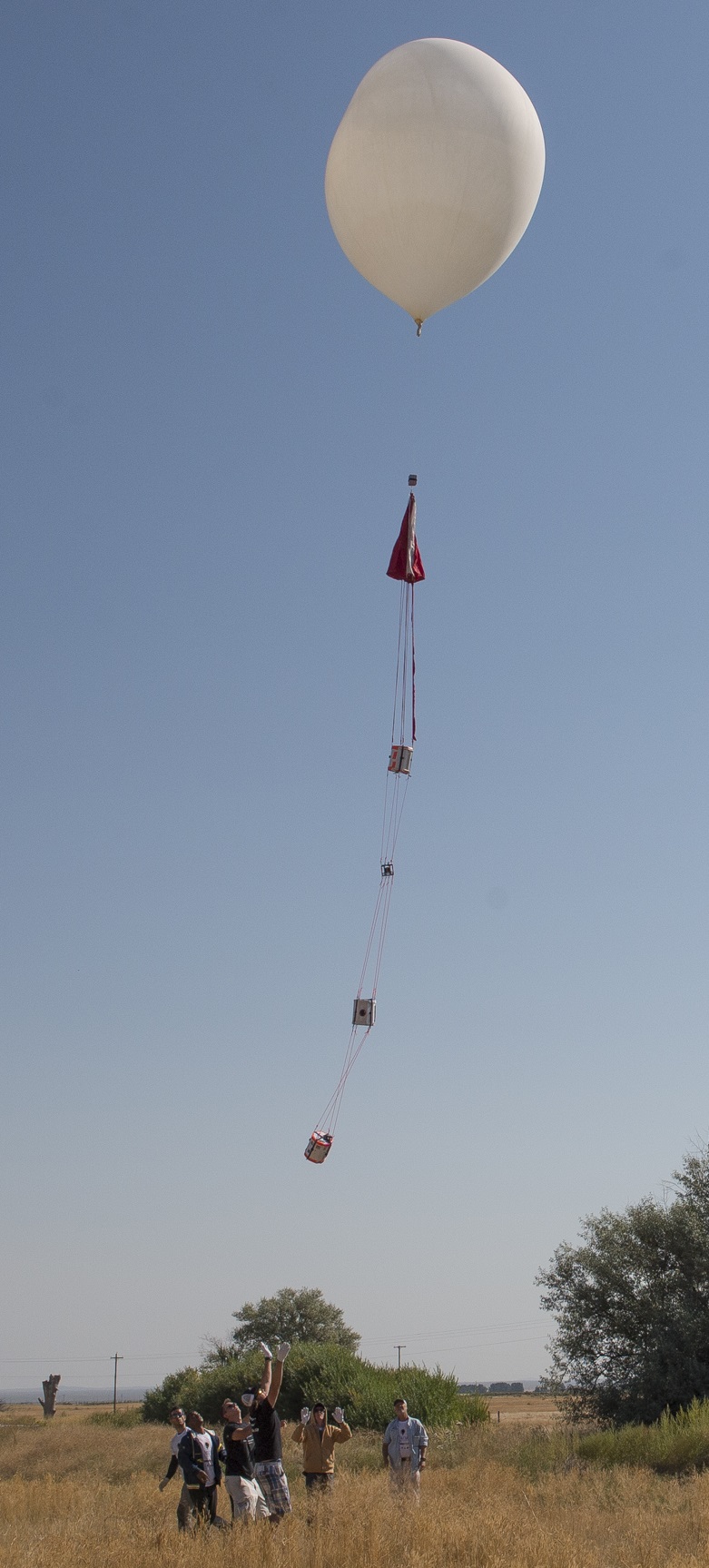NEBP - Track Options
NEBP includes development, training, and follow-through for two primary tracks – 1) atmospheric science and 2) engineering. Participants will work with subject matter experts (SMEs) to develop necessary applicable science and technology knowledge, test designed and built systems, fly eclipse campaigns, analyze data, and publish results. The unique combination of data from the two activity tracks will inform investigation of important scientific and engineering questions, as outlined below.
Ballooning Types. For the purposes of this project, typical academic ballooning types are generalized into two categories: 1) radiosondes and 2) balloons carrying payloads engineered by students, or “engineering platforms.” Both are described in more detail in the following two sections.
 Radiosondes – Atmospheric Science
Radiosondes – Atmospheric Science
Radiosondes are small standardized commercial off-the-shelf payloads of less than 190 grams that are used to measure atmospheric parameters through the stratosphere (see image to the right). At sites along the path of totality, NEBP participants will make frequent observations by launching hourly radiosondes on weather balloons to 100,000 - 115,000 feet. In addition, they will collect high-temporal resolution surface-site data. This design will provide surface, lower, and middle atmospheric observations with enough spatial and temporal sampling to contrast the meteorological differences before, during, and after the eclipse. The surface stations will provide independent measurements of solar irradiance at the surface. All flight phases are led by students, including radiosonde initialization, balloon fill, launch, real-time data quality checks, and preliminary data analysis in the field (Fowler et al., 2019, https://doi.org/10.1175/BAMS-D-17-0331.1).
Large Balloon – Engineering

Engineering balloon platforms are capable of lifting up to 12 pounds of student-built payloads into the stratosphere. Typical engineering platform experiments include atmospheric measurements, photography, cosmic radiation measurements, and space technology proofs of concept. The learners will generate real-time video that will be included in the NASA eclipse broadcast, make-high resolution GPS measurements to compliment the radiosonde data, and conduct other applicable individually designed experiments.
